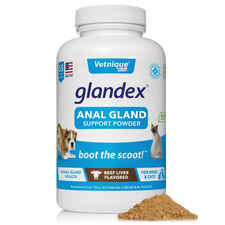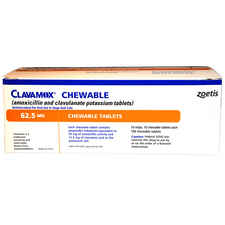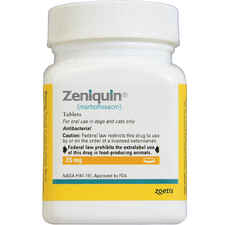How to Treat Anal Sac Problems & Scooting in Dogs
Doctor of Veterinary Medicine

While efforts are made to answer all questions as quickly as possible, if an immediate answer is required or if your pet is in need of urgent or emergency care, contact your pet's veterinarian immediately.
Doctor of Veterinary Medicine

You will receive an answer from Dr. Lindsay and our vet/tech team as soon as possible, usually the same day.
All answers are provided for informational or educational purposes only, and are intended to be a supplement to, and not a substitute for, the expertise and professional judgment of your pet's veterinarian.
It may be necessary to consult your pet's veterinarian regarding the applicability of any opinions or recommendations with respect to your pet's symptoms or medical condition.
CloseDoctor of Veterinary Medicine

An error has occurred, please reload the page and try again.
CloseWhile efforts are made to answer all questions as quickly as possible, if an immediate answer is required or if your pet is in need of urgent or emergency care, contact your pet's veterinarian immediately.
There is no answer related to your question
When a dog's anal sacs are swollen and inflamed they are treated by draining. Draining is done manually or surgically with a scalpel and under anesthetic. When done manually, the procedure is called anal sac expression.
How to manually express a dog's anal sacs
Dog anal sacs are emptied manually either by external or internal expression. Disposable gloves are worn and tissues are prepared to collect the expressed material. With external expression, fingers are placed outside the sacs at the four o'clock and eight o'clock positions and the two sacs are squeezed together. With internal expression, one finger is placed just inside the anus and another finger on the outside of one of the anal sacs and the sac is squeezed.
With both internal and external expression, the sacs are milked gently in an upward direction toward the duct outlet. Sacs are milked and massaged until they are completely empty. The skin is cleaned after expression with an antibacterial agent such as Chlorhexidine. Many veterinarians recommend inserting a hemorrhoid suppository into the anus to release healing homeopathic medication into the area to prevent the procedure itself from causing inflammation.
If your dog was scooting because the anal sacs were full, expect the scooting to stop within 24 hours. Some dogs may be more uncomfortable for a short time after the procedure. If your dog was scooting because of food allergies, fleas, or ringworm that cause itching, expressing anal sacs will not resolve the scooting.
Both internal and external expression are best done by your veterinarian who is able to address the underlying cause, as well as to take the time to gently milk the sacs and ensure they are completely empty. Anal sacs are normally self-emptying, and if they are full or inflamed, there is a medical problem that needs to be addressed.
Do not have your pet's groomer empty the anal sacs. Although many groomers offer anal sac expression as one of their services, this is not a grooming procedure. Anal sacs that are not self-emptying indicate a medical problem that your veterinarian can help you solve.
Recommended products for anal sac inflammation and scooting
Surgically emptying (expressing) the anal sacs
When the anal sac ducts are blocked, your dog is anesthetized and the sac is opened surgically with a scalpel. The sac is flushed with an antiseptic solution and the duct is unblocked. An antibiotic is then flushed into the sac. If your dog has a chronic anal sac problem, or a serious abscess, the surgical procedure may need to be repeated twice a week for 2-3 weeks until healed. If the anal sac has ruptured, your dog will need to have a drain sewn in place. A drain is a flat, open rubber tube that allows material to flow from inside the wound to the outside of the body. With the drain in place, the skin cannot heal over and trap bacteria inside. Instead the area is forced to heal in the healthiest manner—from the inside out. A drain is left in place until no more infected material is produced and your dog will be given an Elizabethan collar so he or she cannot remove the drain. The area is flushed daily and antibiotic is instilled. If your dog heals normally, the drain is removed in 3-4 days.
For chronic sacculitis, anal sac abscess, or anal sac rupture, your dog may need systemic antibiotics, such as Clavamox, Cephalexin, or Zeniquin. However, the antibiotics with the greatest benefit are those flushed directly into the anal sacs, such as Panalog.
Your veterinarian will submit a sample of the anal sac material to a laboratory for analysis when the surgery is done. Analysis of the material ensures your pet is on an antibiotic that kills the bacteria which caused the problem.
If the area does not heal within a few days, and your pet is on an effective antibiotic, your veterinarian will investigate the possibility of other problems, such as cancer.
Surgical removal of anal sacs
For pets with chronic anal sac problems, some veterinarians recommend surgically removing the sacs. While removal prevents anal sacs from becoming inflamed or abscessed, it may not address the cause of the problem. If your dog was scooting and developed anal sac inflammation because of an itchy bottom due to food allergies, your dog will still scoot after the surgery unless his or her diet is changed.
Surgical removal can lead to fecal incontinence if nerves to the perineum are cut. This is rare, but can occur. It is less likely to occur if only one sac is removed because the muscles that close the anus will work efficiently if one of the nerves is intact.
























